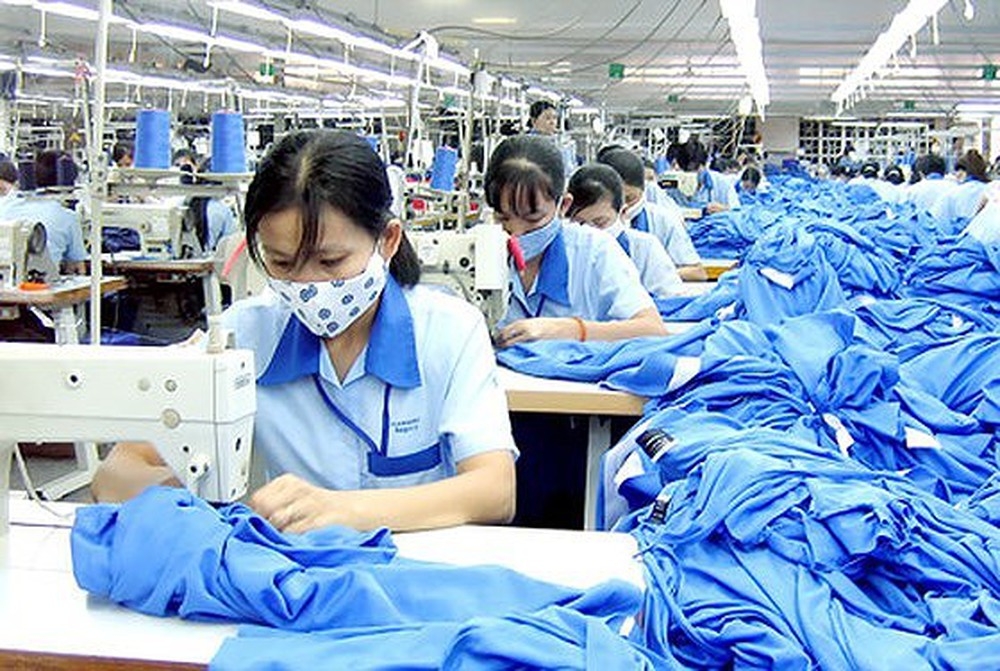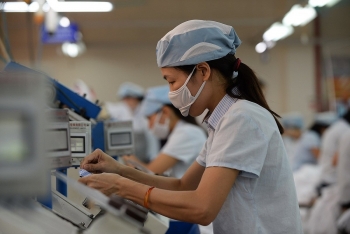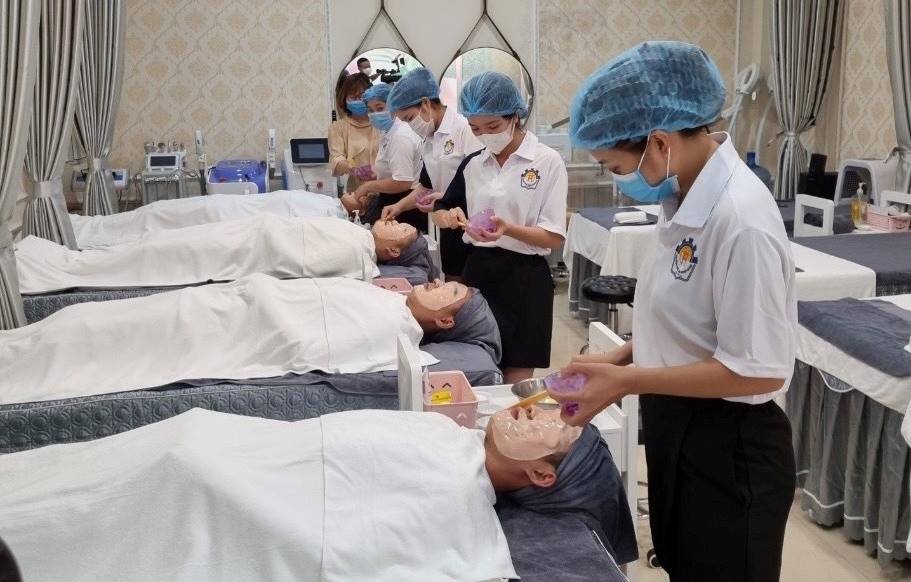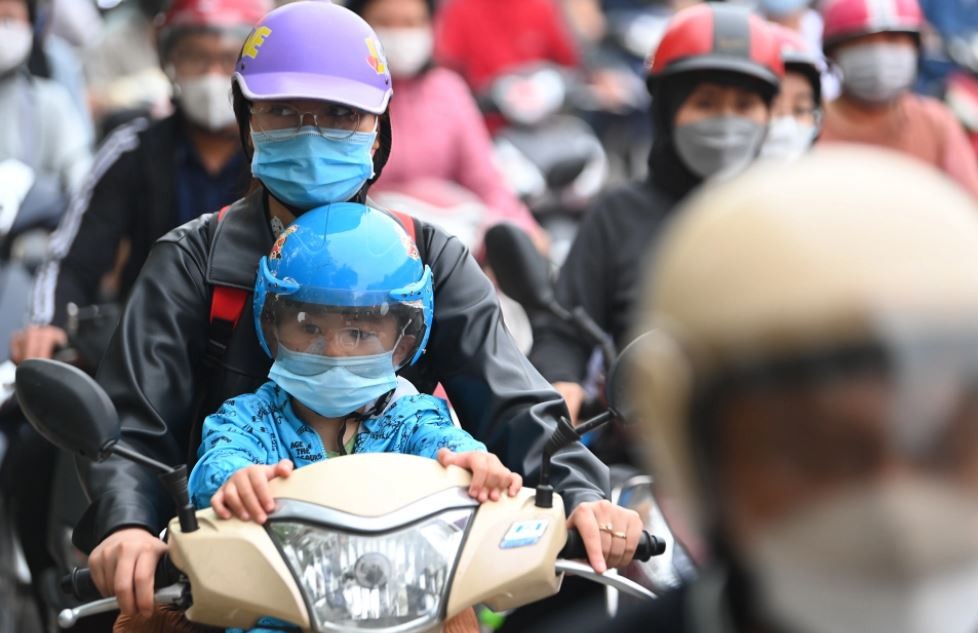Unemployment rate in Vietnam reaches highest in Q1 due to coronavirus
| Millions of Southease Asian jobs might sufffer as COVID-19 goes rampant | |
| Coronavirus could cost the world 25 million jobs, UN says | |
| RoK-supported project to give more employment chances to the blind |
 |
| Vietnamese workers work in a factory (Photo: Bao moi) |
By the end of the first quarter of 2020, the country had about 48.9 million employees of the working age, if counting laborers aged 15 and over, the number of laborers nationwide was about 55.3 million.
The number of unemployed workers in the first quarter of this year was about 1.1 million, an increase of about 26 thousand people compared to the previous quarter.
The unemployment rate in working age in Quarter 1 increased by 2.22%, of which it increased by 3.18% in urban areas, and by 1.73% in rural areas.
Notably, the number of unemployed young people (aged 15-24) is nearly 493 thousand people, accounting for over 44% of the total unemployed.
The number of unemployed young people according to the General Statistics Office is 5.4 times higher than the unemployment rate of adult labor (people aged 25 and over). The number of young people who have no jobs, and do not participate in learning and training is about 1.47 million.
According to the General Department of Statistics, the average income of workers in the first quarter of this year reached VND 6.2 million (US$263), of which male workers had an average income per capita of VND 7.1 million (US$302), higher than female average workers.
By region, the urban area has a per capita income of VND 8.2 million (US$348), while that of the rural area is only VND 5.2 million (US$221).
In the context of the COVID-19 pandemic, labourers without work contracts and unofficial employment are the most vulnerable, Thuy said.
 |
| 5 million workers suffered negative impacts from the pandemic (Photo: Insurance Magazine) |
According to the GSO survey on impacts of COVID-19 to businesses and employment in the first four months, there were nearly five million workers suffering negative impacts from the pandemic.
Of which, the manufacturing and processing industry was the most affected with 1.2 million workers; following by the wholesale and retail industry with more than 1.1 million workers and the accommodation and catering industry with nearly 740,000 workers, reported by Tuoi Tre.
As of mid-April 2020, the transport, warehousing and education sectors had the highest number of temporarily laid-off workers, accounting for 70 per cent of the total workers in each sector.
Meanwhile, the manufacturing and processing industry and the catering service industry had the highest proportion of permanently unemployed and laid-off workers, accounting for nearly 20 per cent of the total workers in each sector.
According to the office, large and medium-sized enterprises were more vulnerable than small and micro enterprises with more than 90 per cent of large and medium-sized enterprises having difficulties in the first four months of this year.
Mr. Pham Quang Vinh, Deputy Director General, said that about 84.8% of businesses surveyed said they had difficulties due to the impact of COVID-19 epidemic.
In the past 4 months, 67% of enterprises said that they have implemented measures to reduce labor, allow workers to take time off, take leave without pay, and reduce their wage.
In addition, nearly 40% of enterprises cut off their jobs, took turns to take leave, and 28% of businesses cut jobs. Only 5.3% of enterprises provide training to improve their labor skills.
 |
| (Photo: Career Builder) |
“Until the end of the second quarter, the pandemic will remain a significant challenge for enterprises and workers. Therefore, to overcome present difficulties, the Government, businesses and workers need to work together to control the pandemic and to gradually stabilise and develop the domestic economy,” GSO Deputy General Director Pham Quang Vinh said.
The Government has put forward many policies to prevent and control the pandemic as well as support enterprises and employees to overcome those difficulties and ensure social security.
However, to increase efficiency of these policies, ministries, sectors and localities need coordination in administrative reform to ensure that all eligible enterprises and workers could enjoy the Government’s support packages, according to Vietnam News.
Besides that, those businesses and workers need to be aware that those policies are only supportive, so they need to actively find business and employment opportunities during and after the pandemic.
Thuy, head of the GSO’s Department of Population and Labour Statistics, has recommended that the enterprises should renew production and business processes as well as find new import markets of input materials and expand export markets.
They should also have training courses to improve skills of workers and promote application of information technology to convert from traditional to online transactions.
For workers, they need to improve their professional skills and prepare soft skills to adapt to non-stop changes of the labour market, Thuy said.
 | Japan to approve Remdesivir for coronavirus treatment this May Prime Minister Shinzo Abe said Monday (April 27) that Japan will soon approve the anti-viral drug remdesivir for the treatment of coronavirus patients, while a government ... |
 | Coronavirus live update: Vietnam goes 4 days straight without new infections Coronavirus today update April 28 sees Vietnam records no new COVID-19 patients for 4 days in a row, keeping tally at 270. Only 48 active ... |
 | Vietnam leads countries most supportive of Government effort in COVID-19 combat Vietnam tops the list of the countries which saw the most supportive of their governments’ efforts in COVID-19 crisis response, according to the latest polling ... |





